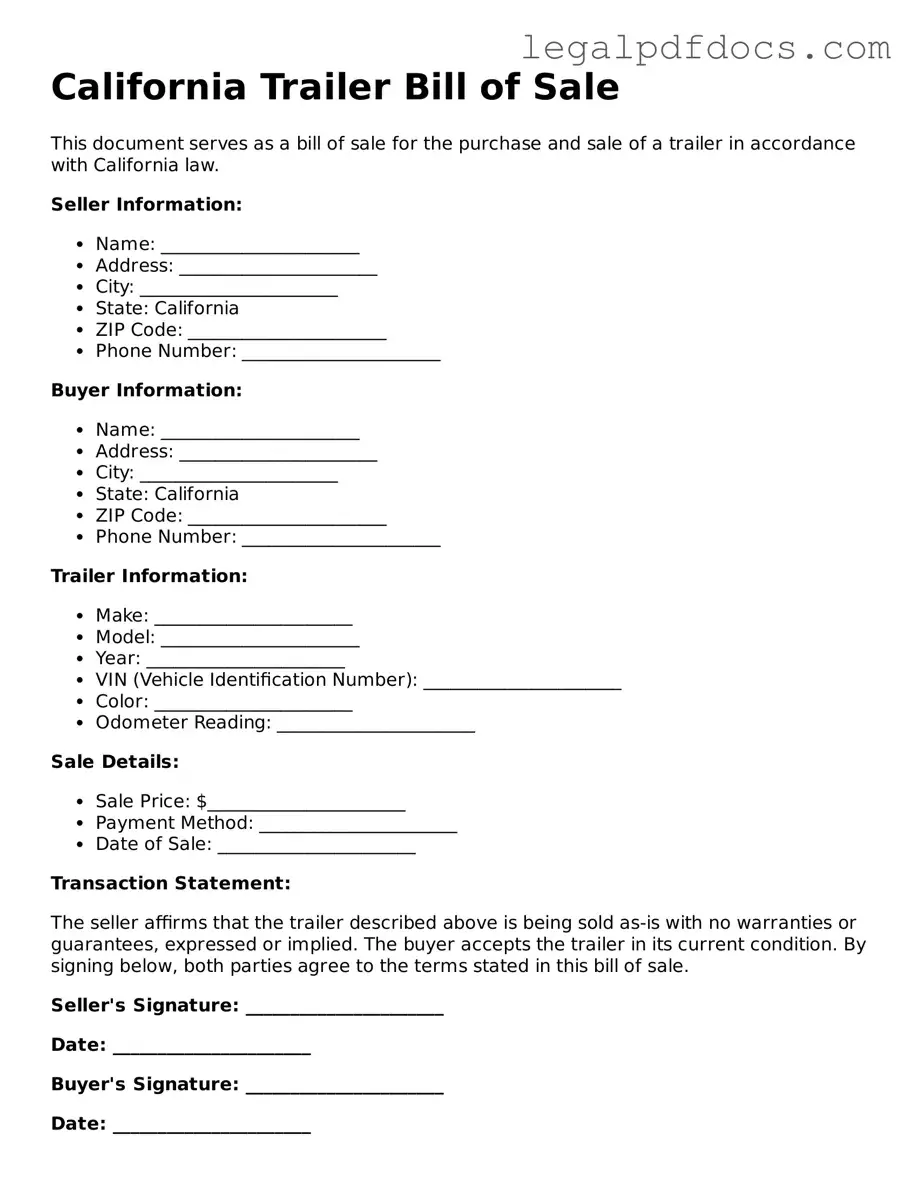Official Trailer Bill of Sale Form for California
The California Trailer Bill of Sale form is a legal document used to record the sale and transfer of ownership of a trailer in California. This form serves as proof of the transaction and outlines essential details such as the buyer, seller, and trailer specifications. Completing this form is crucial for ensuring a smooth transfer process and protecting both parties involved.
To get started, fill out the form by clicking the button below.
Open Trailer Bill of Sale Editor Here
